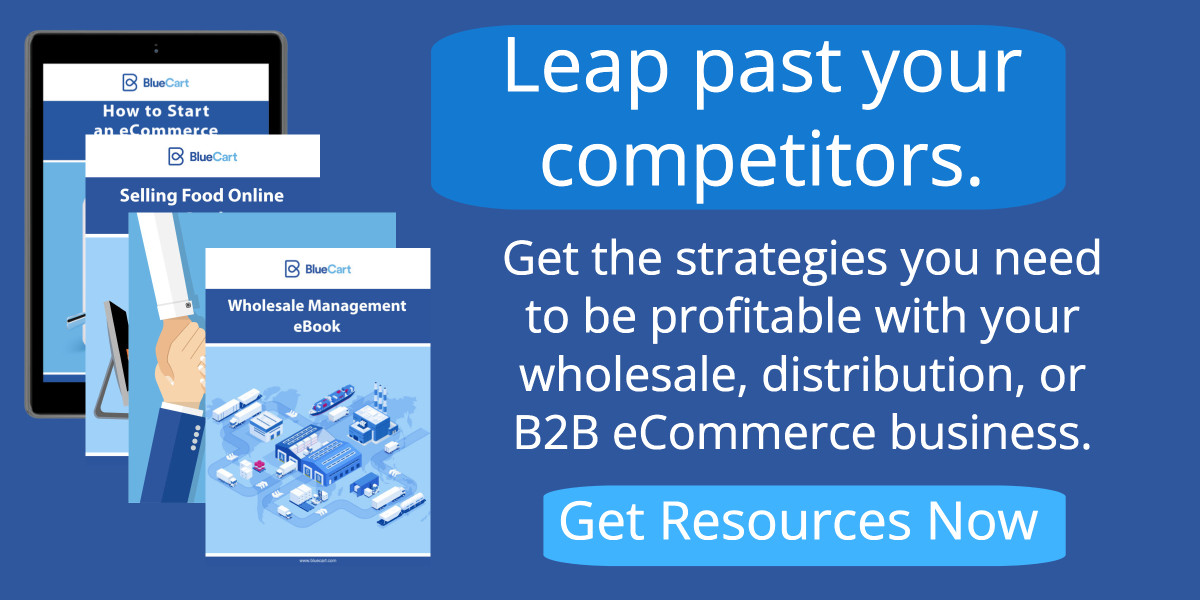Convenience has become a major priority for the majority of people. Today’s fast-paced digital world has led to increased customer expectations. That’s why a lot of businesses use unified commerce to integrate their various channels and platforms into one. This allows customers to get a seamless experience both in-store, online, and on different B2B eCommerce platforms. In this post, we’ll share more about the benefits of unified commerce and the role it plays in businesses. If you’re interested in the topic of unified or omnichannel commerce, you can also read our posts on eCommerce competitor analysis and eCommerce trends – the future of eCommerce.
Key takeaway: Unified commerce means full integration of different sales and marketing channels into a single centralized platform. Thanks to this approach, customers get a better shopping experience and businesses can improve their efficiency and data management.

What Is Unified Commerce
The term refers to integrating different sales channels in a single centralized system. The main reason why businesses invest in unified commerce is that it allows them to track data easily. Customers can also benefit a lot from this approach as it makes their experience more convenient and seamless.
Usually, unified commerce is done through a specialized platform. This solution combines and synchronizes all the customer data, payments, inventory, sales, and various other metrics.
Features of Unified Commerce
There are a few main characteristics of this approach. Let’s examine the key components of unified commerce.
- Centralization. Data gathered by different channels should be unified and centralized. That includes inventory, sales, marketing stats, and all other data used by the business.
- Smooth customer transition. Clients should easily be able to purchase products online and pick them up from a physical location. Furthermore, data from past orders and other data (like loyalty program points) should be available across different platforms.
- Real-time data and analytics. From website and social commerce to sales in physical locations, all data should be integrated and updated in real time. This will improve inventory management and allow business owners to easily analyze the business performance.
Advantages of Unified Commerce
There are multiple reasons why a company might use the unified commerce model. The main advantage is that it allows companies to improve their efficiency. That includes a more systematic approach to inventory management, customer relations, and other business operations. Here are the other major advantages of integrating unified commerce.
- Seamless shopping experience. Customers know that the pricing, branding, and stock levels are the same across different platforms. Furthermore, the shopping process can be started through one channel and finished on another.
- Better data collection and analysis. Integrating omnichannel marketing and sales in a single platform allows businesses to easily analyze data. Thanks to the real-time analytics capabilities of unified commerce, managers can make data-driven decisions. Integrating sales from different platforms and channels also makes it easier to forecast demand and manage inventory.
- Scalability and increased sales. In order to grow easily, businesses need to be scalable. Unified commerce can help greatly in that regard. A business that has well-established processes can easily include new sales channels, marketing platforms, and eCommerce marketplaces. An additional advantage of unified commerce is that it can lead to increased retail and wholesale sales. Due to the higher conversion rate and the improved customer experience, clients can easily spend more or become loyal customers.

Businesses That Use Unified Commerce
This approach is not suitable for all businesses. For example, the investments necessary for small businesses to integrate unified commerce might be too big. However, there are certain niche markets and business categories which can benefit greatly from this approach. Here are a few examples of businesses that use unified commerce.
- Retailers. That includes companies in the apparel sector, appliance stores, and sellers of home products. Zara, H&M, and IKEA are a few examples of retailers that have successfully integrated unified commerce as part of their business model.
- Supermarkets. Grocery stores and large chains like Walmart need to focus on convenience and seamless shopping experience. A growing number of customers choose to buy groceries online and pick them up from the store.
- Food service establishments. Many coffee shops and restaurant chains integrate in-store and mobile systems in order to offer better customer experience. This is combined with loyalty programs, easy payments, and custom offers based on purchase history.
- The travel industry. From hotel chains and cruise ships to airlines and rent-a-car companies, there are many benefits to integrating unified commerce. Both managers and customers can enjoy the perks of having a seamless Omnichannel customer experience.
Omnichannel VS Unified Commerce
There are many similarities but also various differences between unified and omnichannel commerce. The main distinction between the two approaches is that unified commerce uses a single platform where all data is centralized and tracked in real-time. On the other hand, omnichannel commerce uses various systems that exchange data and work together. Generally speaking, integrating omnichannel ecommerce is usually done as a step towards full unified commerce. The focus of both approaches is to integrate sales from different channels and offer a seamless customer experience.

Frequently Asked Questions about Unified Commerce
Do you wish to know more about omnichannel vs multichannel ecommerce? Or perhaps you’re interested in the latest food trends. You’ll find multiple resources on various topics on BlueCart’s website. Below are the answers to a few commonly asked questions regarding the unified commerce approach.
What Are the Disadvantages of Unified Commerce?
Besides the multiple pros of the unified commerce approach, there are also disadvantages to it. The main one is that having a proper unified commerce requires a large initial investment. That includes multiple technological solutions and a strong IT infrastructure. In addition to the large initial investment, this infrastructure needs to be regularly maintained and upgraded. Data and cyberattack risks are also higher when the business has a complex unified commerce system. This increases the need for investments in reliable cybersecurity measures. Furthermore, employees need to be trained to use the new system. This leads to additional costs.
What Are Some Examples of Unified Commerce?
Unified commerce is commonly associated with some type of combination of eCommerce and brick-and-mortar channels. For example, customers might order and pay for their products online and pick them up from a physical store. Unified commerce is useful not only for sales but also for other processes. Many apparel retailers use the unified commerce practice as a way to make returns easier.Starbucks is a good example of a well-executed unified commerce strategy. Customers can order and pay for their beverages in advance through the company’s mobile app. That’s especially convenient for people with busy schedules. Furthermore, all loyalty program reward points and ordering history are updated in real-time.
What Are Unified Commerce Platforms?
A unified commerce platform integrates and connects different sales channels into a single entity. Examples of such platforms include Shopify, BigCommerce, and Oracle Commerce. These platforms allow businesses to connect their point of sale (POS) solution, eCommerce platform, customer relationship management system (CRM), inventory and order management software solutions, and various other areas of the business. The goal is to provide seamless integration and real-time data across different platforms.
BlueCart: An Important Part of Your Unified Commerce Mix
Thanks to BlueCart’s marketplace, wholesalers can create online catalogs of their products and increase their B2B sales. Whether you follow an omnichannel or unified commerce strategy, BlueCart can help your wholesale distribution business. Schedule a demo today and see what benefits our wholesale ordering software offers to specialized suppliers and broadline distributors.